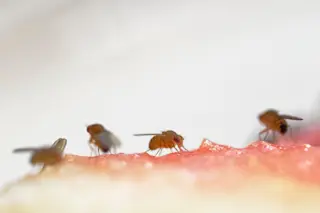For most animals, sex time is obvious. During the fertile phase of their reproductive cycles, females go into heat. They act, smell and look different, sending an unambiguous signal to males: “Come impregnate me.”
But what about humans? Women have sex throughout their menstrual cycles, and don’t show conspicuous outward changes around ovulation — the time of month when pregnancy can occur.
Yet many researchers think there are subtle clues that a lady is in her fertile window. Not quite “heat,” but a real uptick in sex drive and appeal. Ovulating women may flirt more, dress flashy or undergo modest physical changes, such as rosier cheeks and plumper breasts. And some scientists further argue that men can detect these signs on a subconscious level.
To prove it, researchers have designed experiments using everything from strip clubs to Sesame Street (The former study compared tips for lap dancers across their menstrual ...














